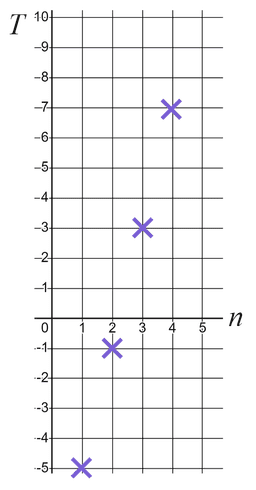Myths about teaching can hold you back
Learn why
New
New
Lesson 7 of 12
- Year 11
- Higher
Arithmetic sequences and their graphs
I can recognise that an arithmetic sequence can be shown graphically and how this relates to the equation of a linear graph and use this to find the n^th term formula.
Lesson 7 of 12
New
New
- Year 11
- Higher
Arithmetic sequences and their graphs
I can recognise that an arithmetic sequence can be shown graphically and how this relates to the equation of a linear graph and use this to find the n^th term formula.
These resources were made for remote use during the pandemic, not classroom teaching.
Switch to our new teaching resources now - designed by teachers and leading subject experts, and tested in classrooms.
Lesson details
Assessment exit quiz
Download quiz pdf












